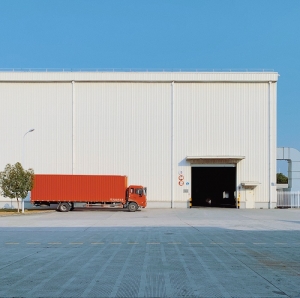please click here:
https://www.plastic-material.com/pps-material.html
Polyphenylene sulfide, commonly known as PPS material, has evolved into a cornerstone of advanced engineering applications. Its unique balance of thermal stability, mechanical strength, and chemical resistance allows it to outperform many conventional plastics—making it a preferred choice across automotive, electronics, aerospace, filtration, and industrial manufacturing.
While traditional polymers like nylon, ABS, or polypropylene often dominate consumer-level products, PPS material stands in a category of its own as a high-performance, engineering-grade resin. This article explores what PPS material is, how it is produced, its advantages, limitations, applications, and how it compares with other advanced polymers. Whether you are a sourcing manager, product engineer, or manufacturer seeking reliable materials for demanding environments, PPS is worth a closer look.
What Is PPS Material?
PPS material is a high-performance engineering thermoplastic known for its remarkable resistance to heat, chemicals, and mechanical stress. It is a semicrystalline polymer composed of repeating phenylene and sulfide units that give it inherent rigidity and durability.
Originally commercialized in the 1970s, PPS has gained widespread adoption due to its ability to retain dimensional stability under aggressive thermal and chemical exposure. Unlike many plastics that soften or degrade when exposed to solvents or high heat, PPS maintains performance even under long-term stress.
How PPS Material Is Produced
PPS is typically synthesized through the polycondensation of sodium sulfide and dichlorobenzene. Variations in molecular structure give rise to several forms:
-
Linear PPS – Higher toughness and weldability
-
Cross-linked PPS – Enhanced heat resistance and chemical stability
-
Compounded PPS – Reinforced with glass fiber, carbon fiber, PTFE, or minerals to enhance properties
Manufacturers often reinforce PPS with glass fibers (typically 30%–40%) to achieve exceptional stiffness, making it suitable for parts replacing metals in high-stress applications.
Key Advantages of PPS Material
Exceptional Heat Resistance
One of the most defining characteristics of PPS is its ability to endure extremely high temperatures. PPS maintains its structural integrity at continuous service temperatures up to approximately 200–240°C, with short-term resistance even higher.
This allows components to be used in engines, boilers, ovens, and other high-temperature environments where most plastics fail.
Superior Chemical Resistance
PPS is virtually impervious to solvents, fuels, oils, acids, and bases. It survives prolonged exposure without swelling, dissolving, or degrading, making it ideal for chemical processing equipment, pumps, valves, and fuel systems.
Dimensional Stability
Low moisture absorption and high stiffness help PPS remain dimensionally stable even under thermal cycling. This makes it a top choice for precision electrical parts, tight-tolerance components, and assemblies requiring long-term reliability.
Flame Retardancy
PPS is naturally flame-resistant, often achieving UL94 V-0 ratings without the need for additives. This feature is essential in electronics, EV components, aerospace interiors, and safety-critical parts.
Electrical Insulation
PPS exhibits low dielectric constant and good insulating performance, making it significant in connectors, PCB components, coil forms, and sensor housings.
Limitations of PPS Material
Although PPS offers outstanding performance, it does come with constraints:
● Brittleness
Unreinforced PPS can be brittle. This is typically addressed by adding glass fiber or engineering additives, but impact strength still remains lower compared with materials like PEEK or PA66.
● Limited Elongation
PPS generally has low elongation at break, restricting its use in flexible or impact-heavy applications.
● Higher Cost Compared to Commodity Plastics
Due to its specialized properties and complex production, PPS is more expensive than common thermoplastics. It is usually reserved for applications where long-term performance justifies the investment.
● Processing Challenges
PPS requires precise processing conditions. Mold temperatures, drying requirements, and reinforcement orientation must be carefully controlled to prevent defects.
Where PPS Material Is Used: Major Industrial Applications
Automotive Industry
PPS has become indispensable in modern automotive systems as engines grow more compact and thermal loads increase.
Common PPS applications include:
-
Fuel system components
-
Water pump parts
-
EGR system housings
-
Electrical connectors
-
Gaskets and seals
-
Turbocharger parts
The low emissions, fuel resistance, and ability to withstand heat make PPS superior for under-the-hood environments.
Electronics & Electrical Engineering
PPS is widely used in high-performance electronics because of its insulation properties, heat resistance, and stability.
Typical uses:
-
Connector housings
-
Switches and relays
-
Bobbins and coil forms
-
Terminal blocks
-
LED lighting components
Its flame retardancy and dimensional accuracy make it a preferred choice for miniaturized devices.
Aerospace & Aviation
Aircraft systems demand materials that can resist heat, vibration, and corrosive chemicals. PPS offers a lightweight alternative to metals while maintaining reliability.
Applications include:
-
Sensor housings
-
Hydraulic system components
-
Interior parts
-
High-performance fasteners
Industrial Fluid Handling
Chemical resistance makes PPS suitable for handling aggressive liquids.
Applications:
-
Pump components
-
Valve seats
-
Flow meter parts
-
Filter frames
-
Pipes and fittings
Filtration & Environmental Applications
PPS fibers are used to produce high-temperature filter bags and filtration systems for industrial emissions, waste incineration, and coal-fired power plants.
Consumer Products
While less common due to cost, PPS appears in premium appliances and cookware components that require resistance to heat and chemicals.
Comparison: PPS vs Other High-Performance Polymers
| Property / Material | PPS | PEEK | PA66 (Nylon 66) | PTFE |
|---|---|---|---|---|
| Heat Resistance | Excellent | Outstanding | Moderate | Excellent |
| Mechanical Strength | High | Very High | Moderate | Low |
| Chemical Resistance | Excellent | Excellent | Moderate | Exceptional |
| Cost | Medium-High | Very High | Low | Medium |
| Dimensional Stability | Very High | Very High | Medium | Low |
| Electrical Performance | Strong | Strong | Good | Weak |
| Processability | Moderate | Difficult | Easy | Difficult |
Conclusion of Comparison:
PPS strikes a unique balance: stronger than PTFE, cheaper than PEEK, and more heat-resistant than PA66. This makes it a preferred mid-range high-performance polymer where cost and efficiency must align.
Why Manufacturers Choose PPS Material Over Metals
A growing trend is replacing metal components with PPS to reduce weight, cost, and manufacturing complexity. PPS provides:
-
Resistance to corrosion without coatings
-
Lighter weight for improved energy efficiency
-
Easier processing compared to machining metal
-
Freedom to create more complex geometries through molding
-
Cost reduction through part consolidation
With reinforced PPS grades, mechanical strength can approach aluminum in some applications, making it a credible replacement in specific load-bearing scenarios.
Processing Techniques Used for PPS Material
Injection Molding
The most common processing method. PPS maintains low viscosity at high temperatures, allowing complex geometries with tight tolerances.
Extrusion
Used for making films, rods, and sheets.
Compression Molding
Ideal for fiber-reinforced or filled PPS composites.
Blow Molding
Used less frequently but applicable to certain hollow components.
Regardless of method, strict moisture control is essential to prevent degradation.
Future Trends of PPS Material in Engineering
The demand for PPS is expected to grow significantly across multiple industries:
Electric Vehicles
EVs require durable, heat-stable plastics for battery modules, charging systems, power electronics, and insulation components. PPS fits these requirements perfectly.
Miniaturized Electronics
As devices shrink, materials must maintain stability under higher thermal and electrical loads—another domain where PPS excels.
Green Manufacturing
PPS's longevity and resistance to corrosion support sustainability by reducing replacement frequency and energy consumption.
Advanced 3D Printing (Emerging)
While still experimental, interest in 3D-printable PPS composites is rising, potentially opening doors for customization and rapid prototyping.
How to Determine Whether PPS Is the Right Material for Your Application
Consider PPS material if your project involves:
-
High continuous temperatures
-
Exposure to corrosive chemicals
-
Need for flame resistance
-
Tight dimensional tolerances
-
High mechanical rigidity
-
High electrical insulation
Avoid PPS if your application demands:
-
High impact strength
-
High ductility or flexibility
-
Ultra-low cost production
Frequently Asked Questions About PPS Material
1. Is PPS material safe for food-contact applications?
Certain grades of PPS are certified for food contact, but this varies by manufacturer. Always request documentation before use in food systems.
2. Can PPS replace metal components?
Yes. In applications requiring heat, corrosion resistance, and mechanical strength, reinforced PPS can successfully replace metals while reducing weight and cost.
3. Is PPS recyclable?
PPS can be recycled through industrial processes, though recycling availability may vary by region due to its high-performance nature.
4. How does PPS perform outdoors?
PPS has good resistance to UV and weathering, but for long-term outdoor exposure, UV-stabilized grades are recommended.
5. Can PPS withstand continuous exposure to hot water or steam?
Yes. PPS maintains dimensional stability and does not hydrolyze easily, making it suitable for hot-water, steam, and boiler systems.
Summary
PPS material is a high-performance engineering polymer offering exceptional heat resistance, chemical stability, and dimensional accuracy. It is widely used in automotive, electronics, aerospace, and industrial systems. This article explores its properties, advantages, applications, comparisons, and FAQs.






